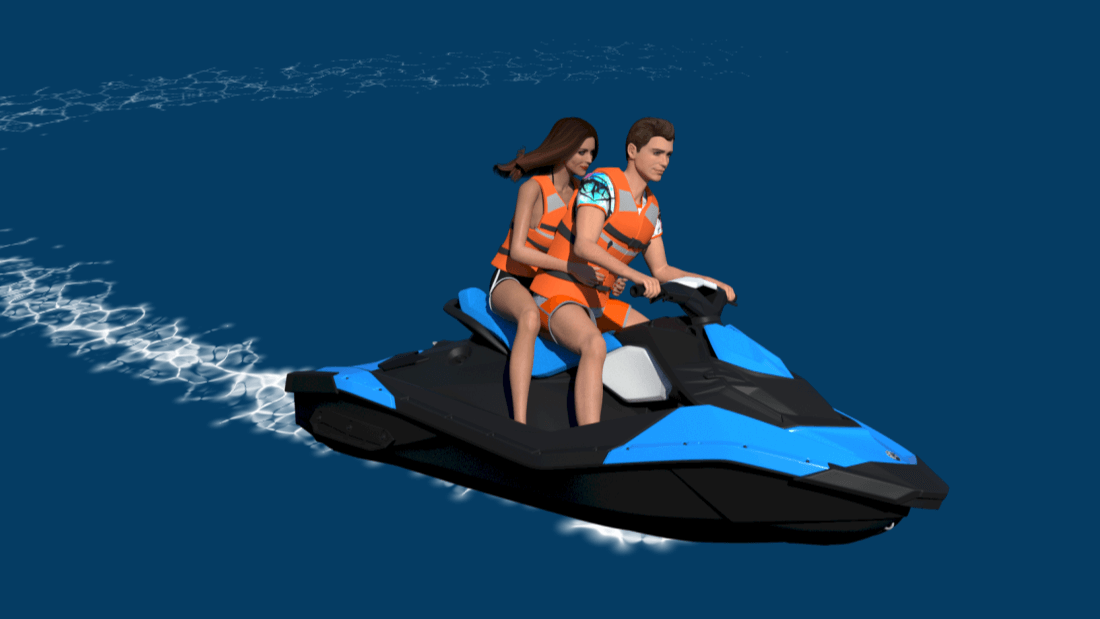PWC - Lanyard - Steering control - Lookout
PWC - Lanyard
Most PWCs have a lanyard connected to the start/stop switch. If your PWC is equipped with such a switch, it will not start unless the lanyard is attached to it.
Never start your engine without attaching the lanyard to your wrist or PFD.
If you fall off, the engine automatically stops running so your craft will not travel a great distance and you can easily swim to it. It will prevent the PWC from running unattended in areas populated by swimmers or other watercraft.

PWC - Steering control

PWC operators need to keep in mind that a jet drive requires moving water through the drive nozzle for maneuverability. In other words you must have power applied in order to maintain steering control.
If you release the throttle to idle or if the engine shuts off during operation you will lose all steering control. In either situation, the PWC will continue in the direction it was headed before the throttle was released or the engine was shut-off. Operation of the steering control will have no effect. If you are approaching a dock, shore, or other vessel at a speed greater than you can control and you release the throttle to idle or shut off the engine, you will have no maneuvering capability and the PWC will continue its forward movement.
Newer PWCs have a reverse mechanism that you can use to slow the forward motion of the vessel. These PWCs are equipped with cowlings that allow them to operate in reverse. The reverse cowling is a specially designed diverter that can be lowered over the jet nozzle. The water jet produced by the jet nozzle hits the reverse cowling and is directed back toward the front of the PWC, thus producing a force that propels the PWC backward.
Although this feature is convenient for low speed operations in close quarters, it can be quite dangerous if used in situations for which it was not designed.
Operating in reverse can greatly reduce the ability to steer. Using the reverse feature at other than idle speed can throw the operator forward, and perhaps off, the PWC. In addition, using reverse at high speed can raise the stern of the PWC, pushing the bow down and under water. If your PWC has this feature you should use it with caution only after you have tested its capabilities and limitations at low speed in open water.
PWC - Proper Lookout
Most PWC accidents occur from running into another object, most often another PWC. Operating in a crowded or congested area requires special precautions. Always keep a proper lookout as to what is going on around you.
- Look at what other boats around you are doing.
- Always look around and behind you before making a turn.
- Remember that you must obey all rules of operation as they apply to motorboats.
- Larger boats may not even be able to see you if you are too close and they may not be able to get out of your way in time.
Keeping a proper lookout can save your life!
